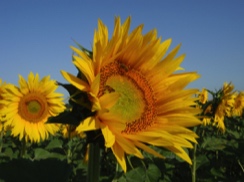- Call: 00 33 (0)2 51 28 43 98
- WhatsApp/Mobile: 00 33 (0)6 43 37 87 74
The Weather in the Vendée
Weather Overview for the Vendée
The Vendée is a province situated around half way down France’s west coast and takes it name from the river that runs through it. The Vendée is part of the Pays de la Loire region that is home to the city of Nantes. La Roche-sur-Yon is the main town in the Vendée. It is a charming part of France and the 140km of sandy beaches, together with the great summer weather, have helped to make the Vendée such a popular holiday destination.
The Vendée is a province situated around half way down France’s west coast and takes it name from the river that runs through it. The Vendée is part of the Pays de la Loire region that is home to the city of Nantes. La Roche-sur-Yon is the main town in the Vendée. It is a charming part of France and the 140km of sandy beaches, together with the great summer weather, have helped to make the Vendée such a popular holiday destination.

The micro-climate of the Vendée helps to make it one of the sunniest places in France with nearly 2500 annual sunshine hours on average. Between June and September daily highs are regularly in the 20s. July and August are the hottest months with an average temperature of 20 - 25C varying between highs in the mid to upper 20s and lows high teens. Summer temperatures are in general very comfortable; it rarely gets too hot for comfort especially by the sea, although occasional summer heat waves can bring temperatures in the 30s.
There is little rain and lots of sunshine in the summer. June, July and August are the driest months with around 40mm average monthly rainfall. From September, rainfall starts to build a little. Days in peak summer enjoy an average of up to 9 sunshine hours.

Early autumn can enjoy plenty of good weather but it does start to get a bit cool and wet by the end the season. Early autumn, just after the summer crowds have dispersed, can be an excellent time to visit Vendée
September still enjoys plenty of summer weather with daily highs averaging 21C. Rainfall does increase as the month goes on, but average rainfall is only 63mm for the month.
October can enjoy some warm sunny weather with temperatures in the high teens, but equally the overnight temperatures dip into single figures once more. Rainfall remains on the increase too with the month averaging 78mm.
November is one the wettest months of the year with an average with almost 90mm rainfall. In terms of temperature it’s quite cool too with temperatures more often than not in single figures. By the end of the month you can certainly feel the onset of winter.

While winters can certainly be chilly in the Vendée there is usually an absence of really cold temperatures, especially in the coastal areas. This is thanks mainly to the influence of the warming currents from the Gulf Stream.
Winter temperatures average 5C in the coldest months of December and January, with highs around 8C and lows around 2C. Freezing temperatures can occur but they are not common. You are much more likely to get frosts and snowfall the more you move inland.
Winter is the wettest season of the year and damp cloudy days are not uncommon. December and January both average more than 80mm of rainfall, and February sees just over 70mm.

The cold winter weather gradually gives way to summer throughout the months of spring. So visit early in spring and you can still experience cold wet weather, but by the end of the season you can be enjoying plenty of warm sunny days.
In March average temperature is a cool 8C, in April it’s up to 10 - 15C and by May its 14 - 18C and daily highs in the high teens are common. Rainfall is almost 70mm in March but by May it is down to close to 50mm. April and May enjoy an excellent average of 7 sunshine hours per day.

